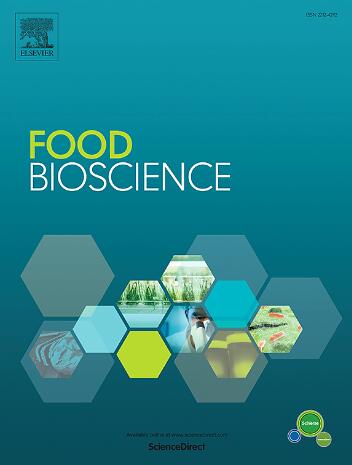Effects of mitoquinone on various patterns of postmortem apoptosis and beef tenderization
IF 4.8
1区 农林科学
Q1 FOOD SCIENCE & TECHNOLOGY
引用次数: 0
Abstract
Apoptosis encompasses various patterns such as death receptor pathway. However, the specific mechanisms by which these apoptotic patterns contribute to beef tenderization have not been clarified. In this study, changes in various apoptotic patterns of beef were determined and mitoquinone was selected for validation of postmortem apoptosis. Consequently, CYCS, BAX and APAF1 genes and proteins in mitochondrial apoptosis declined with postmortem time. AIFM1 genes and proteins in mitochondrial-DNA cross-linking also exhibit weaker expression. Similarly, FAS proteins in death receptor pathway, and CASP12 proteins in endoplasmic reticulum pathway showed a decreasing trend with postmortem time. These results indicate that numerous apoptotic patterns have a higher potential during early postmortem. Furthermore, mitoquinone decreased the expression of AIFM1, CYCS, BAX, BAK1, APAF1, CASP9, FAS, and CASP12 proteins, suggesting the inhibition of various apoptotic patterns. Mitoquinone also improved mitochondrial structure and restrained caspase-3 activity. Ultimately, mitoquinone reduced MFI and affected the integrity of sarcomere and Z-line. Thus, the increase in the levels of mitochondrial apoptosis, mitochondrial-DNA cross-linking, death receptor and endoplasmic reticulum pathway may promote the destruction of myofibrillar structure, suggesting a positive correlation between these apoptotic patterns and beef tenderization.
求助全文
约1分钟内获得全文
求助全文
来源期刊

Food Bioscience
Biochemistry, Genetics and Molecular Biology-Biochemistry
CiteScore
6.40
自引率
5.80%
发文量
671
审稿时长
27 days
期刊介绍:
Food Bioscience is a peer-reviewed journal that aims to provide a forum for recent developments in the field of bio-related food research. The journal focuses on both fundamental and applied research worldwide, with special attention to ethnic and cultural aspects of food bioresearch.
 求助内容:
求助内容: 应助结果提醒方式:
应助结果提醒方式:


